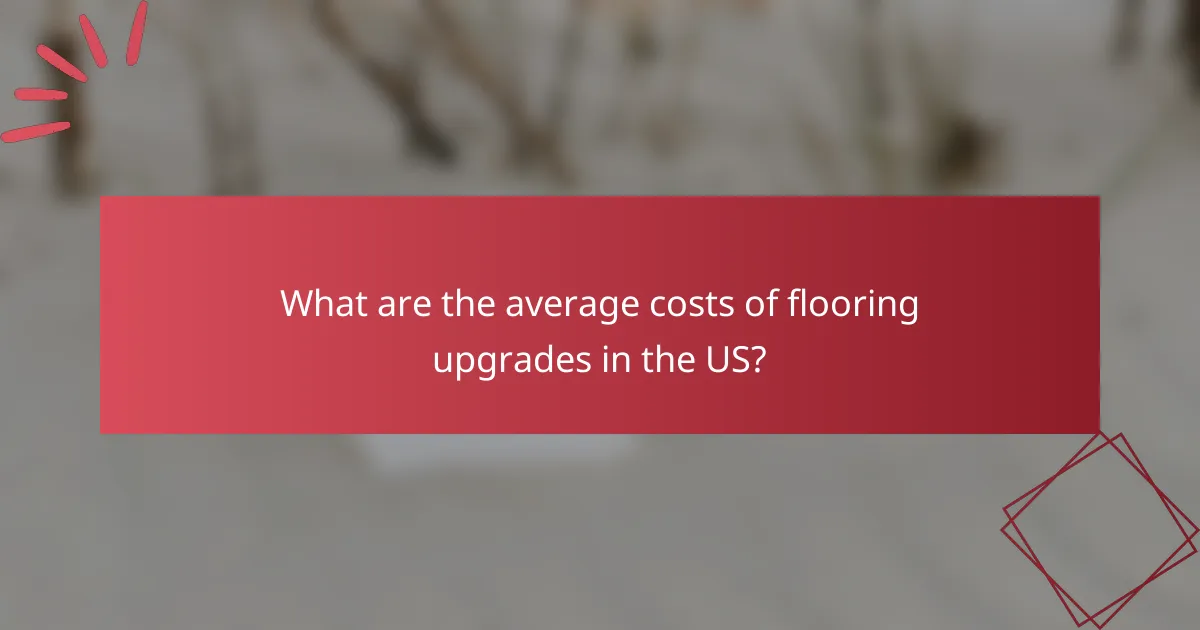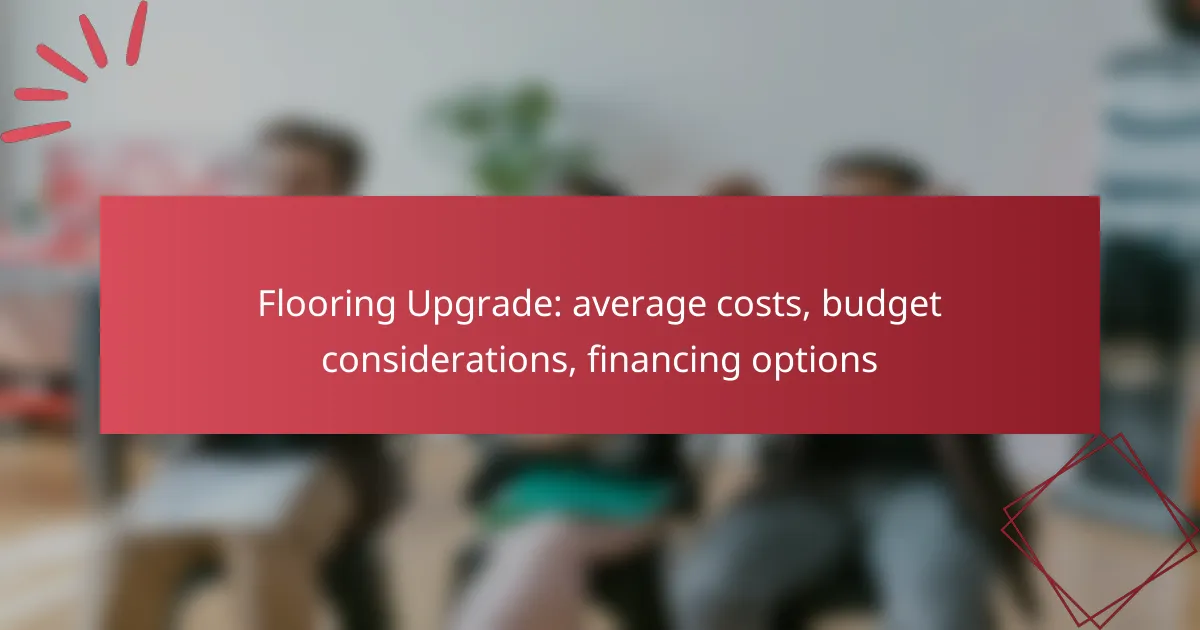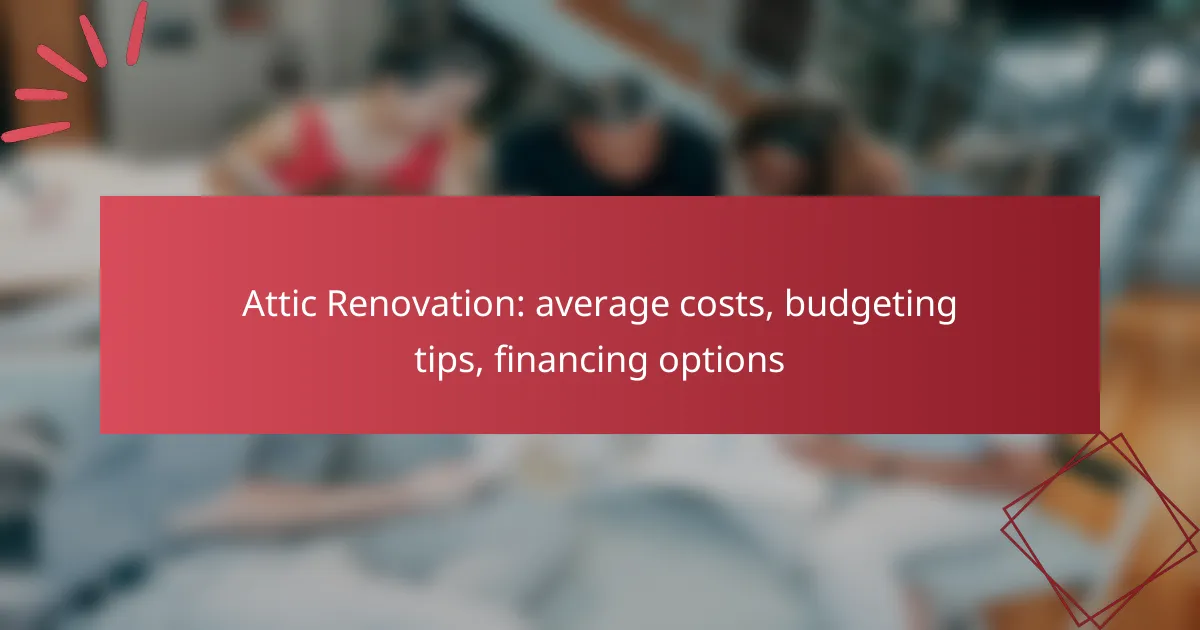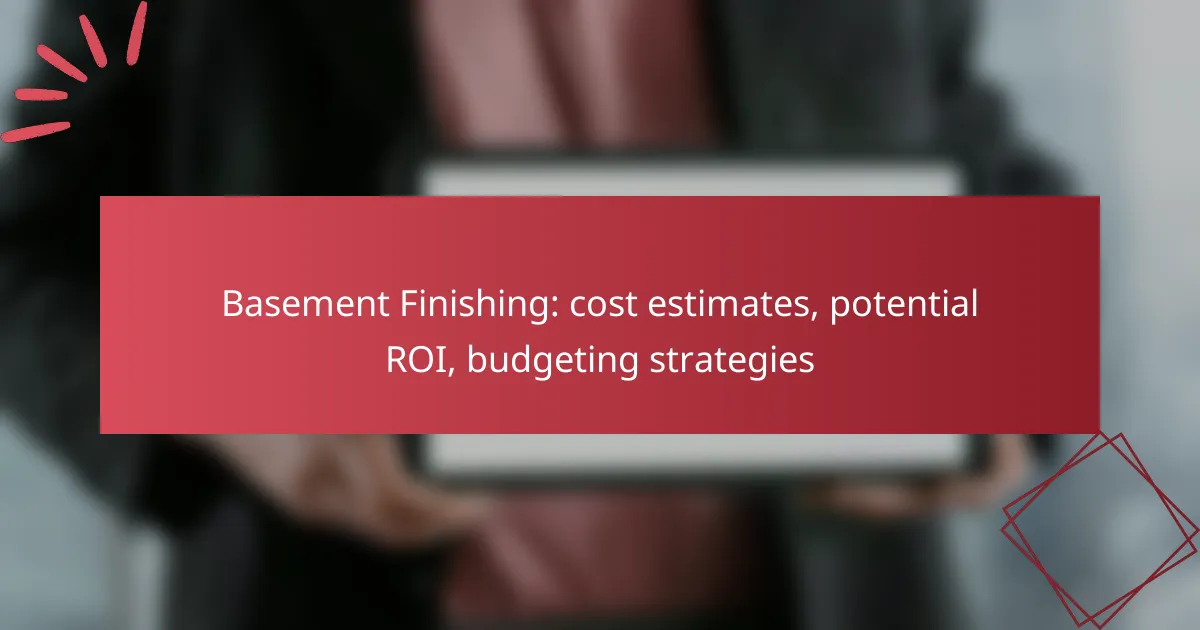Upgrading your flooring can significantly enhance the aesthetic and value of your home, but it’s important to understand the average costs involved. Depending on the material and installation complexity, homeowners may spend anywhere from a few to over twenty dollars per square foot. To effectively budget for this project, consider all associated costs and explore various financing options that can help manage your expenses.

What are the average costs of flooring upgrades in the US?
The average costs for flooring upgrades in the US can vary significantly based on the material chosen, installation complexity, and location. Generally, homeowners can expect to spend anywhere from a few dollars to over twenty dollars per square foot, depending on the flooring type and quality.
Hardwood flooring costs
Hardwood flooring typically ranges from around $5 to $15 per square foot for materials alone, with installation costs adding an additional $3 to $8 per square foot. Factors such as wood species, finish, and whether the wood is solid or engineered can influence the final price.
For example, oak and maple are common choices that may be on the lower end of the price spectrum, while exotic woods like mahogany can be significantly more expensive. It’s essential to consider the long-term value of hardwood, as it can increase a home’s resale value.
Laminate flooring costs
Laminate flooring is a more budget-friendly option, typically costing between $1 to $5 per square foot for materials, with installation fees ranging from $2 to $5 per square foot. This type of flooring mimics the appearance of wood or tile but is made from composite materials.
While laminate is less expensive, it may not offer the same durability or lifespan as hardwood. However, it can be a practical choice for high-traffic areas or homes with pets due to its resistance to scratches and stains.
Tile flooring costs
Tile flooring costs can vary widely, generally ranging from $1 to $20 per square foot for materials, depending on the type of tile selected, such as ceramic, porcelain, or natural stone. Installation costs typically add another $5 to $15 per square foot.
Natural stone tiles, like granite or marble, tend to be on the higher end of the price range, while ceramic tiles are often more affordable. Consider the maintenance requirements and the room’s moisture levels when choosing tile, as some types are better suited for bathrooms or kitchens.
Carpet flooring costs
Carpet flooring generally costs between $2 to $10 per square foot for materials, with installation costs ranging from $1 to $4 per square foot. The price can vary based on the carpet’s fiber type, density, and brand.
Higher-quality carpets made from nylon or wool can be more expensive but offer greater durability and comfort. When selecting carpet, consider factors like padding and installation methods, as these can impact overall comfort and longevity.
Factors affecting flooring costs
Additionally, regional pricing differences may affect costs, with urban areas often having higher labor rates. Always budget for potential additional expenses, such as underlayment, removal of old flooring, and any necessary repairs to the subfloor before installation. Comparing quotes from multiple contractors can also help in finding the best deal.

How can I budget for a flooring upgrade?
To budget for a flooring upgrade, start by determining your total spending limit and the types of flooring you want. Consider material costs, installation fees, and any additional expenses to create a comprehensive financial plan.
Setting a flooring budget
Begin by researching the costs of different flooring materials, such as hardwood, laminate, tile, or carpet. Prices can vary widely, typically ranging from $1 to $15 per square foot, depending on the material and quality. Factor in installation costs, which can add another $2 to $6 per square foot.
Next, assess the total area you plan to upgrade. Measure the square footage and multiply it by the cost per square foot to get a rough estimate. Always include a buffer of 10-20% for unexpected costs or additional materials.
Unexpected expenses
During a flooring upgrade, unexpected expenses can arise, such as subfloor repairs or the need for additional underlayment. These costs can add up quickly, so it’s wise to set aside a contingency fund. Aim for at least 15% of your total budget to cover these surprises.
Additionally, if you are removing old flooring, there may be disposal fees or costs associated with moving furniture. Be prepared for these potential expenses to avoid budget overruns.
Cost-saving tips
To save on flooring costs, consider purchasing materials during sales or clearance events. Many retailers offer discounts during holidays or seasonal sales, which can significantly reduce your overall expenses.
Another option is to tackle the installation yourself if you have the skills and tools. This can save you hundreds of dollars, but ensure you are comfortable with the process to avoid costly mistakes. If hiring a professional, get multiple quotes to find the best price.

What financing options are available for flooring upgrades?
Several financing options can help you manage the costs of flooring upgrades, including home improvement loans, credit card financing, and retailer-specific financing plans. Each option has its own benefits and considerations, making it essential to choose the one that best fits your financial situation.
Home improvement loans
Home improvement loans are personal loans specifically designed for renovations, including flooring upgrades. These loans typically offer fixed interest rates and can range from a few thousand to tens of thousands of dollars, depending on your creditworthiness and the lender’s policies.
When considering a home improvement loan, evaluate the total cost of borrowing, including interest rates and any associated fees. It’s advisable to shop around and compare offers from different lenders to find the best terms.
Credit card financing
Using a credit card for flooring upgrades can be a convenient option, especially if you have a card with a low interest rate or a promotional 0% APR offer. This method allows you to pay for your flooring immediately while spreading the cost over time.
However, be cautious of high-interest rates that can apply after any promotional period ends. It’s wise to pay off the balance before incurring interest to avoid escalating costs.
Retailer financing options
Many flooring retailers offer financing plans that can include deferred interest or installment payments. These plans often come with promotional periods where no interest is charged if the balance is paid off within a specified timeframe.
Before committing to retailer financing, read the terms carefully. Look for any hidden fees or conditions that could affect your total payment. Additionally, ensure that the financing aligns with your budget to avoid financial strain later on.

What are the benefits of upgrading flooring?
Upgrading flooring can significantly enhance a home’s appeal, functionality, and overall value. This investment not only improves the aesthetic quality of your living space but also contributes to long-term durability and maintenance efficiency.
Increased home value
New flooring can raise your home’s market value, making it more attractive to potential buyers. Quality materials like hardwood or luxury vinyl can yield returns of 70% to 80% on investment when selling.
Consider the local real estate market; in areas where modern finishes are in demand, upgrading flooring can be a key selling point. Research comparable homes to understand how flooring choices impact pricing.
Improved aesthetics
Upgrading flooring enhances the visual appeal of your home, creating a cohesive and inviting atmosphere. A fresh, modern floor can transform a space, making it feel larger and more comfortable.
Choose colors and textures that complement your existing decor. For example, light-colored floors can brighten a room, while darker tones can add warmth and sophistication.
Enhanced durability
Modern flooring options are designed for durability, often lasting longer than older materials. For instance, engineered hardwood and tile are resistant to scratches and moisture, making them ideal for high-traffic areas.
When selecting flooring, consider maintenance requirements and longevity. Investing in high-quality materials may have a higher upfront cost but can save money on repairs and replacements in the long run.

What should I consider before choosing flooring materials?
Before selecting flooring materials, consider factors such as durability, maintenance, cost, and aesthetic appeal. Each type of flooring has its own advantages and disadvantages that can impact your long-term satisfaction and budget.
Average costs of flooring materials
The average costs of flooring materials can vary widely based on the type and quality. For instance, laminate flooring typically ranges from $1 to $5 per square foot, while hardwood can range from $5 to $15 per square foot. Luxury vinyl and tile options may fall between these ranges, often costing around $2 to $10 per square foot.
Installation costs should also be factored in, which can add another $1 to $5 per square foot depending on the complexity of the job and local labor rates. Always obtain multiple quotes to ensure you get a fair price.
Budget considerations for flooring upgrades
When budgeting for flooring upgrades, consider not just the material costs but also installation, underlayment, and potential removal of existing flooring. A comprehensive budget should account for unexpected expenses, which can be common in renovation projects.
It’s wise to set aside an additional 10-20% of your total budget for contingencies. This can help cover any surprises that arise during the installation process, such as repairs to the subfloor or additional materials needed.
Financing options for flooring projects
Financing options for flooring projects include personal loans, credit cards, and retailer financing plans. Personal loans can offer lower interest rates, while credit cards may provide rewards but can lead to higher interest costs if not paid off quickly.
Many flooring retailers offer financing plans that allow you to pay over time, often with promotional interest rates. Be sure to read the terms carefully, as some may have deferred interest that can lead to high costs if not managed properly.



